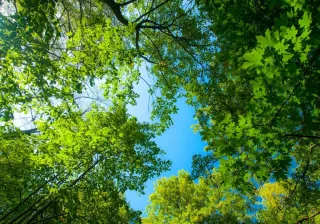A joint study by the University of Turku and VTT Technical Research Centre of Finland has shown that the ability of photosynthesising microbial cells to produce biohydrogen from solar energy can be markedly improved by attaching the cells to a transparent nanocellulose film. The method is also expected to enhance the production of other biochemicals from microalgal cells. The results have been published in the prestigious Journal of Materials Chemistry A.
The work of Yagut Allahverdiyeva (Associate Professor of Molecular Plant Biology at the University of Turku) and her team on the utilisation of photosynthetic microalgae and cyanobacteria is considered among the most promising enablers of the bioeconomy. Thanks to the simple engineered biofilm structures, solar energy captured by photosynthesis can be directed into the desired end-product in an efficient and controlled manner.
– The key role is played by cell immobilisation, i.e. binding the cells within or onto a surface of a gel-like substance, whereby the cell metabolism shifts from the growth of biomass to the production of the desired compounds. Additionally, attachment of the cells to a thin, transparent film significantly reduces the loss of light energy compared to normal cultivation of microalgae in the growth medium, says Allahverdiyeva.
Material suitable for immobilisation must be porous, transparent, water-resistant and biologically compatible with algal cells.
– Nanocellulose film meets all these requirements. It is an effective replacement for the material used until now, an alginate polymer with relatively poor mechanical durability and low porosity. The transparent nanocellulose film developed by VTT has better mechanical performance and its porosity can be easily tailored, says Tekla Tammelin, a Principal Scientist at VTT.
The study revealed the high compatibility of nanocellulose with hydrogen-producing green algae and cyanobacteria. In addition, the hydrogen production yields of green algal cells were clearly higher for the nanocellulose membrane than when using alginate.
– What is more, the release of molecules larger than hydrogen from the nanocellulose film can be facilitated by an optimal pore structure, which will be used in the future production of other biochemicals required by industry, such as hydrocarbons or terpenes, says Allahverdiyeva.
The research, which was funded by the Novo Nordisk Foundation, has been published in the Journal of Materials Chemistry A. M. Jämsä, S. Kosourov, V. Rissanen, M. Hakalahti, J. Pere, J. Ketoja, T. Tammelin, Y. Allahverdiyeva: Versatile templates from cellulose nanofibrils for photosynthetic microbial biofuel production. http://doi.org/10.1039/C7TA11164A





